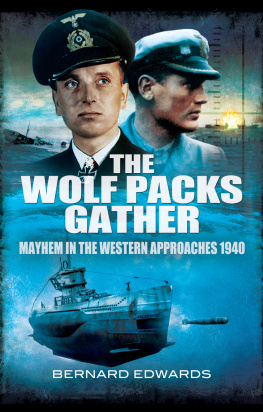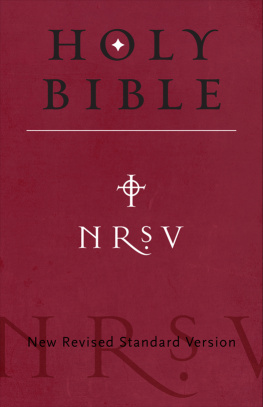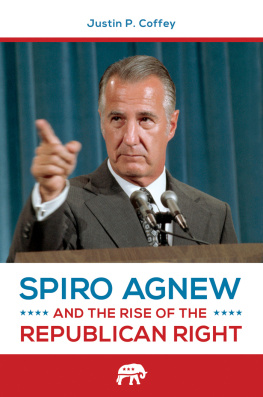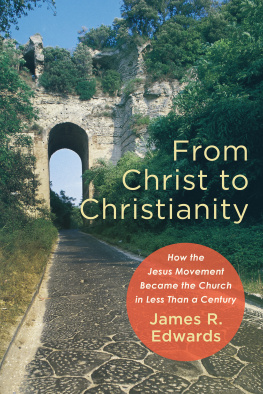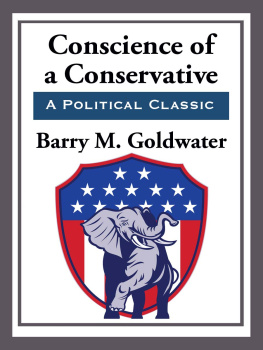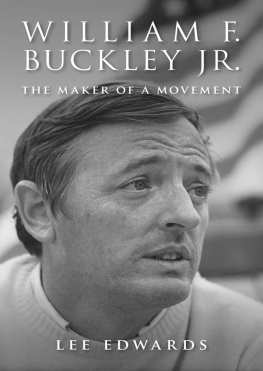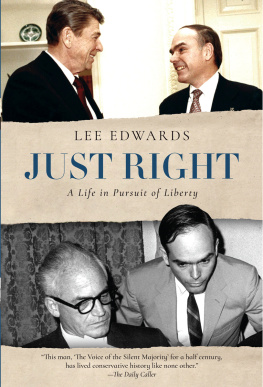The Conservative Revolution
The Movement That Remade America
LEE EDWARDS
THE FREE PRESS
1999 Lee Edwards

Also by Lee Edwards

THE POWER OF IDEAS The Heritage Foundation at 25 Years
GOLDWATER
The Man Who Made a Revolution
MISSIONARY FOR FREEDOM The Life and Times of Walter Judd
J OHN PAUL II IN THE NATIONS CAPITAL (ed.)
REBEL PEDDLER
YOU CAN MAKE THE DIFFERENCE
RONALD REAGAN A Political Biography
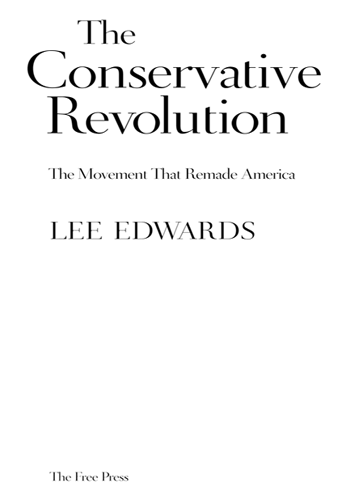

THE FREE PRESS
A Division of Simon & Schuster Inc.
1230 Avenue of the Americas
New York, NY 10020
www.SimonandSchuster.com
Visit us on the World Wide Web: http://www.SimonSays.com
Copyright 1999 by Lee Edwards
All rights reserved, including the right of reproduction in whole or in part in any form.
Designed by Lee Edwards
THE FREE PRESS and colophon are trademarks of Simon & Schuster Inc.
ISBN 0-684-84421-4
ISBN: 978-0-684-84421-3
eISBN: 978-0-684-84421-3
Dedication
To the founders of the American conservative movement, especially Russell Kirk, William F. Buckley, Jr., and Barry Goldwater
Contents

Introduction

WHEN REPUBLICANS IN 1994 CAPTURED THE U.S. HOUSE OF REPRESENTATIVES for the first time in forty years, regained control of the U.S. Senate, and wound up with thirty governorships representing 70 percent of the countrys population, stunned Democrats (and not a few analysts) wondered What happened?
It was, according to the New York Times, a political upheaval of historic proportions. The change that the American electorate called for, concluded the Washington Post, was almost uniformly in one direction against liberalism and toward the right.
The 1994 elections were, quite simply, the most dramatic manifestation of a conservative revolution in American politics that had been going on for fifty years. It was conservative because it offered an orderly transition to a new form of politics and yet revolutionary because it represented a radical change from the immediate past.
The conservative revolution rested on two epic events, one foreign, one domestic, that have shaped our tumultuous times. The first, and more important, was the waging and winning of the cold war. The second was the American publics rejection, after years of acceptance, of the idea that the federal government should be the primary solver of our major economic and social problems.
Conservatives declared from its emergence that communism was evil and had to be defeated, not just contained. And they saw that the federal government had grown dangerously large and had to be rolled back, not just managed more efficiently.
Because conservatives played a decisive role in ending the cold war and alerting the nation to the perils of a leviathan state, they reaped enormous political rewards, from Ronald Reagans sweeping presidential victories in 1980 and 1984 to the Republicans historic capture of Congress in 1994.
But we find little discussion of the conservative revolution in history books. If we seek explanations as to why communism fell, we read that the Soviet Union was much weaker and more extended than we had realized and that history fortuitously produced a Soviet reformer and democrat in Mikhail Gorbachev. These books tell us that the policy of containment worked, although it took several decades longer than its formulator, American diplomat and liberal icon George Kennan, had predicted.
And from such histories we also learn that it was the New Democrat, Bill Clinton, who recognized that the era of big government is over. He was, they instruct, reacting to the national debt of over $5 trillion produced mostly by the faulty economics of the two previous Republican presidents. It was also Clinton who promised to end welfare as we know it and delivered on his promise: The number of welfare recipients across the country declined by 9 percent during the first Clinton administration.
These history books speak of conservatives, it is true, but usually as demagogues, Machiavellians, and simpletons. Accordingly, Senator Joseph McCarthy, a beetle-browed bully, instigated a modern Reign of Terror in the early 1950s. Barry Goldwater, an Arizona cowboy, threatened to destroy social security and start a nuclear war as a presidential candidate in 1964. Ronald Reagan, a one-time B-movie actor, produced a climate of rampant greed with his trickle-down economic policies in the 1980s. And House Speaker Newt Gingrich, reeking of malfeasance, tried to carry out a contract against America.
Such an accounting is light-years away from the true political history of America over the past five decades. It glorifies mediocrities and demeans extraordinary men and women. The failure of so many historians, considered eminent in their field, to present an accurate political portrait of the modern conservative movement, and therefore modern American politics, prompted the writing of this book: the political history of a disparate, often fractious group of philosophers, popularizers, and politicians who rose up to challenge the prevailing liberal orthodoxy. And they triumphed over great odds to become the national movement that dominates American politics today.
The conservative revolution that remade America was a long time in the making. Indeed it seemed on the edge of extinction more than once: after the untimely death of Robert A. Taft in 1953, after the crushing defeat of Barry Goldwater in 1964, after the Iran-contra affair in 1987, and after the demonization of Newt Gingrich in the 1990s. But the conservative revolution not only survived these crises, each time it gained strength and momentum, in large measure because of its principled leaders.
First came the men of ideas: intellectuals and philosophers like Friedrich A. Hayek, the Austrian-born classical liberal; Russell Kirk, the midwestern traditionalist; and Irving Kristol, the New York City Trotskyite-turned-neoconservative. Next came the men of interpretation: the journalists and popularizers like the polymath William F. Buckley, Jr.; the columnist and television commentator George Will; and the radio talkmeister Rush Limbaugh.
Last came the men of action, the politicians and policymakers, led by the Four Misters: Mr. Republican, Robert A. Taft; Mr. Conservative, Barry Goldwater; Mr. President, Ronald Reagan; and Mr. Speaker, Newt Gingrich. There were also two Republican presidents whose lives and careers were intertwined with the conservative movement from the 1940s through the 1970s: Herbert Hoover and Richard Nixon. Conservatives admired Hoover for refusing to be the passive scapegoat of the Great Depression and for helping to build the conservative movement. And conservatives never forgot that Nixon was the tough young congressman who got former Soviet spy Alger Hiss, no matter Nixons later transgressions such as shaking hands with Mao Zedong in China and using Keynesian methods to deal with the economy.


